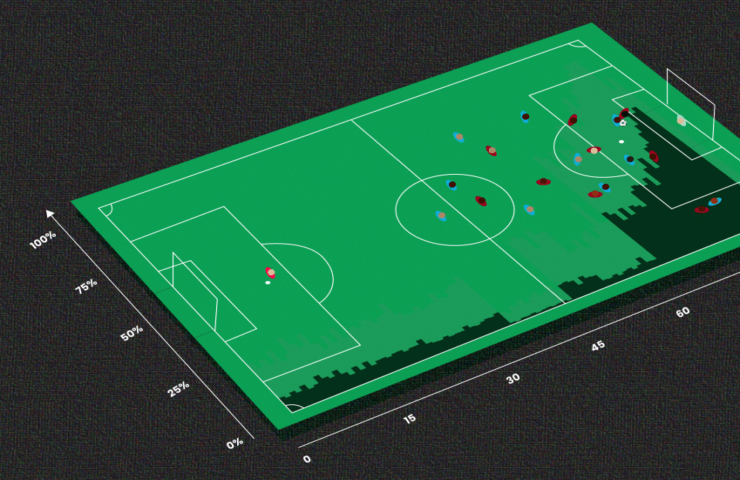
The Belgian laboratory forming contemporary soccer’s information revolution
If you want to grasp why modern-day soccer looks the method it does, or the long strides we have actually made just recently in comprehending how it actually operates, it assists to learn about what’s been happening at one of the world’s oldest universities, in Belgium.That’s where you’ll discover the Sports Analytics Lab at the Catholic University of Leuven, headed up by Jesse Davis, a Wisconsinite computer technology professor. Davis matured going to basketball and football games at the University of Wisconsin-Madison and didn’t discover soccer up until college, during the 2002 World Cup. When he was worked with in Leuven in 2010 to research study machine learning, data mining and expert system, a band of sports-besotted coworkers brought him back to soccer.Advertisement Eventually, Davis was supervising a stable of post-docs
, PhD and master
‘s students working on soccer data. The richness and intricacy of the data provided itself well to the research study of AI. The work they produced, and offered to anybody through open-source analytics tools, considerably advanced the science behind the sport, and changed the method some clubs considered playing.Related: ‘It’s a brand-new world ‘: the experts using AI to psychologically profile elite players It may likewise serve as an example of how
funding university research study can benefit the general public, consisting of business working within the field being studied; a possible parable for the value of academia at a time when it is being squeezed from all sides.In the early days of the analytics motion in sports, it was broadly believed that soccer didn’t provide itself very well to innovative statistical analysis because it was too fluid.
Unlike baseball, or basketball, or arena football, it couldn’t be broken down really easily into a series of discrete actions that could be counted and appointed some sort of worth. Its most measurable action, shots, and therefore objectives, comprise a tiny portion of the occasions in a provided game, presenting a problem for measuring each player’s contributions– especially in the numerous positions where players tend not to shoot at all.Advertisement But while soccer was slow to adjust and adopt analytics, it arrived ultimately. Many huge clubs now have a substantial information department, and there’s now a disproportionately big category of
(incomparably readable)books on this fairly esoteric subject.The Sports Analytics Laboratory released its findings on the ideal locations for taking long shots or asking whether, in some situations, it’s more efficient to boot the ball long and out of bounds than to construct out of the back. A few of those papers brought inscrutably academic-y titles like “A Bayesian Method to In-Game Win Probability “or “Analyzing Learned Markov Decision Processes Utilizing Design Monitoring for Providing Tactical Guidance in Expert Soccer.” Carefully, they likewise released a blog that broke all of it down in layperson’s terms.This fresh research led to cooperations with information experts at clubs such as Red Bull Leipzig, Club Brugge and the German and United States federations. The lab also dealt with its local pro club, Oud-Heverlee Leuven and the Belgian federation.Advertisement But what wonders is that a years and a half on, Davis and
his group, which numbers about 10 at any given time, are still doing industry-leading and paradigm-altering research study, like its current work tweak how ball belongings is valued.Related: What MLS can gain from the J League’s development in Japan Now that the sport, on top end, has totally embraced analytics and baked it into everything it does, you would anticipate it to outmatch and after that sideline the outsiders, as has actually taken place in other sports. However it didn’t.”Elite sport, and not simply soccer, has an intense concentrate on what comes next,
“states Davis.”This is particularly true due to the fact that careers are so short lived both for
players and personnel. Subsequently, the reality that you may not be around tomorrow does not foster the desire to take threats on tasks that, A, may or might not work out or, B, will yield something useful however not in the next six-to-nine months. “Advertisement There is ingenious work being done within soccer clubs that the outdoors world does not get to see, because what would be the point of sharing all that hard-won insight? The rewards of expert sports strains against the scientific procedure, which values taking threats and tinkering endlessly with the design of experiments, none of which may yield anything of usage. What’s more, it needs extremely skilled professionals, who can be tricky and expensive to hire. The benefit of that investment may be limited. And if it gets to all, the output of that work might not always assist a group win games, specifically in the brief term.Meanwhile, most of the low-hanging soccer analytics fruit– like shot value, or which types of passes produce the most risk– has already been chosen. What remains are far more complex issues like tracking information and how to understand it.You may discover, for example, that while anticipated objective models have actually ended up being respectable at measuring and tabulating the opportunities a team developed over the course of a game, they do not work well in putting a number on a particular striker’s finishing ability because of predispositions in the training data.Yes. Sure. Great. Today what? What are Brentford (or his potential brand-new club Manchester United)expected to do with the understanding that Bryan Mbeumo’s Premier League-leading xG overperformance of +7.7– that is, Mbeumo’s anticipated objectives from the quality of his
scoring opportunities was 12.3, but he actually scored 20 times this previous season– doesn’t really suggest that he was the very best or most effective finisher in the Premier League?Advertisement What’s more, when a club does turn up a useful bit, they have to find a way to not only execute that finding, however to track it over the long term. That indicates constructing some sort of system to accommodate it, which requires information engineering and software programming. On the club side, this kind of work can use up much, or many, of the labor in analytics work.” For a few of the deep knowing models to work with tracking data takes months to code for remarkable programmers,”says Davis. “Structure and keeping this is a huge upfront expense that does not yield immediate wins. This is followed by an expense
to maintain the
facilities.”Academics, on the other hand, have less time pressure and can move on to some originality if a project does not work out or there is simply no more brand-new understanding to be gained from it. “I don’t have to stress over setting up information pipelines, developing interactive control panels, processing things in real time, and so on, “states Davis.The research itself is the point.
The understanding that issues from it is completion, not the ways. And then everyone else gain from this intellectual progress.Advertisement There may be a useful lesson in this for how a federal government, state, may consider the value of buying clinical inquiry.Leander Schaerlaeckens is at deal with a book about the United States guys’s national soccer team, out in 2026. He teaches at Marist University.
